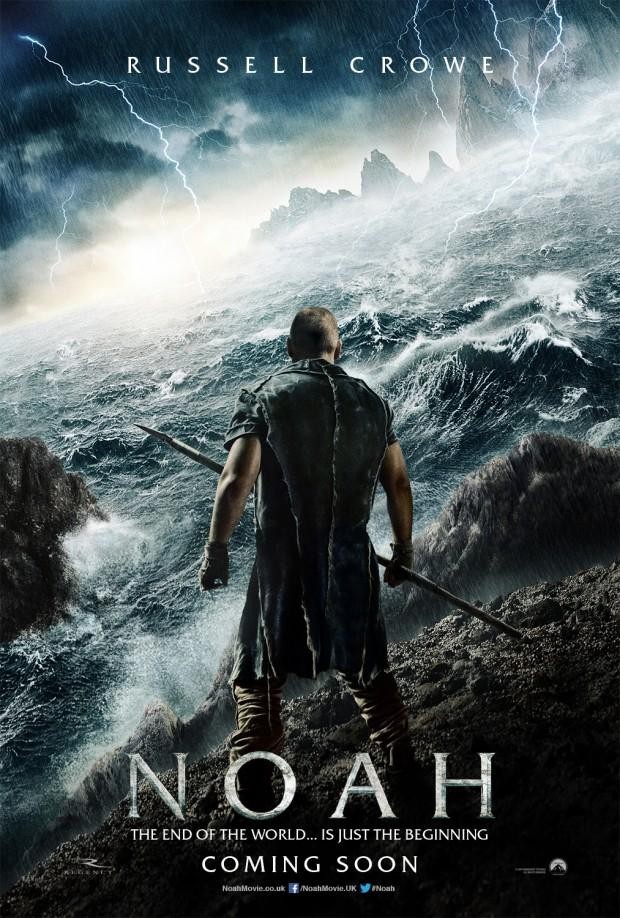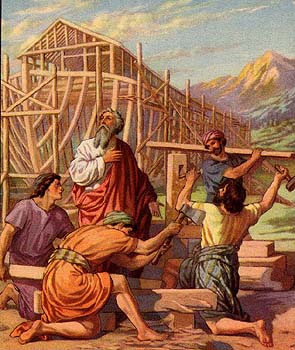I’m going
to go out on a limb and assume at least some of you watched the Super Bowl
a while back. The game itself was…boring
for the best reason (go Hawks), but that’s neither here nor there. The
thing that really keeps people in their seats these days is the Super Bowl
commercials. These ads, which are
important because they are aired during the single most watched event of the
television year, have become an institution in and of themselves and the occasional
movie trailer is no exception.
This year, a
lot of Hollywood’s big players played their hand with their Superbowl
trailers. We had a trailers for Captain America 2: The Winter Soldier, Transformers 4: Age of Extinction and The Lego Movie among others. Also, quick side bar: the aforementioned Lego Movie really is as good as you’ve
heard. You should go see it. Now. I’ll wait.
 |
| Oh man...my shoes are going to get so wet. |
Anyway, despite the big name trailers throughout the game, like me you may have been
attracted to a short 30 second spot at the beginning of the game. The movie in question looks like some sort of
High Fantasy apocalypse. It’s got
Russell Crowe who is generally decent, Emma Watson who is generally hot, and
it’s directed by Darrin Arronofsky who doesn’t really make bad movies. It’s also got some cool shots in the trailer
like celestial beings falling to Earth and a guy with a fire sword (which is a
statement that I wish could be attributed to more movies in general). But then the title appears and the film’s
name is revealed: Noah. Okay, what?
Where was all of this stuff in Sunday school? It certainly would’ve made things a whole lot
interesting right?
 |
| Actually he was a drunk. No really. |
To
understand why a film about Noah’s Ark can look this…unbiblical,you need to
understand a bit about the mythology behind it.
The basic premise is simple and straightforward. The foundation of the tale is found in
Genesis, the first book of the Christian Old Testament and the Torah, the
Jewish holy texts attributed to Moses.
The story itself is fairly basic: It’s been seven generations or so
since the whole mishap in the Garden of Eden and God is fed up because the
“world is full of wickedness.” He
decides to wipe out the Earth with a massive flood but also to save the one
decent man from the devastation. This
man is Noah, who, along with his family, is instructed to build a massive ark in
which to ride out the flood accompanied by two of every animal in the
world. Noah does as he’s told and he
survives the waterlogged end of days. In
the end, God presents Noah and his family with a rainbow as a sign that he
loves mankind and will never do something that genocidal again.
 |
| Giglamesh (right) pictured here with his bro Enkidu. |
The story is
a simple morality fable but it’s got a few more layers to it. Specifically, it’s one of those rare Bible stories that may have a basis in fact. If other religions from the Fertile Crescent,
the region between the Tigris and Euphrates Rivers (located in modern day Iraq),
are any indication then the Flood Myth is fairly ubiquitous across the
board. Even the Saga of Gilgamesh, a Sumerian epic and quite possibly the first of
its kind features a tale where the protagonist encounters a survivor of “The
Great Deluge.” Between that universality
and some geological evidence it’s quite possible that the Fertile Crescent
really was beset by a massive flood at some point in the distant past.
But that
still doesn’t explain the stuff with the angels and the fire sword and the
like. For that wackiness we need to turn
to Deuterocanon. Deuterocanon refers to
the various collections of writings by Hebrew and Christian authors that are
considered to be non-canonical to official teachings. Perhaps the most well-known instance of
Deuterocanon is the Book of Enoch. The
Book of Enoch is a collection of writings associated, aptly enough with Enoch,
the grandfather of Noah. The book
retells a number of tales from Genesis including the Flood Myth, but it goes
into much greater detail about the world surrounding them. The author details such events as the Fall of
the Watchers, the creation of the Nephilim and other decidedly more fantastical
stories about Earth before it started raining.
As luck would have it, it seems as though Darrin Arronofsky is drawing
from the Book of Enoch as a source of inspiration. Let’s dive right in, shall
we?
 |
| Very like a Nephilim but not quite. Still cool though. |
Let’s start
with that scene of angels plummeting to Earth.
This is most likely a reference to the Fall of the Watchers. The Watchers themselves were angels who took
a decidedly more active role in serving as God’s sentries on Earth. That is to say they actually roamed the Earth
among humanity.
The problem is that apparently the Watchers had a thing for human women
and began to lust after those over whom they were charged. Their desire eventually resulted in beings
often called the Nephilim, who were the offspring of “sons of God,” and “the
daughters of man.” The Nephilim are
often characterized as giants who possessed tremendous strength and power not
unlike the Norse Jötunn or the Greek Titans. Enoch goes on to say that the Nephilim were at least partially to blame
for God sending the flood to cleanse the world.
That said, recent modern interpretation is that the Nephilim may have
been the sons and daughters of local lords who were given to abusing their
powers, but I wouldn’t hold my breath for something so mundane to appear in this
adaptation.
| Pictured: Tubal-cain. Not pictured: the flaming sword |
But if the
movie’s IMDb page is anything to go on, the angels themselves aren’t going
to be the primary threat. It’s looking
like that role falls to Ray Winstone (known for his role in Beowulf) who will be portraying a figure
named Tubal-cain. The smart money says he's the guy with the fire sword in the teaser. Tubal-cain is actually referenced at one
point in Genesis during one of those long-winded genealogies that Moses was so
fond of writing and that God was apparently fond of imparting upon his charge. Rashi, a well-regarded medieval French rabbi,
interpreted Tubal-cain’s name to mean “he who spices the craft of Cain.” Cain, of course, was one of the two sons of
Adam and Eve who killed his brother Abel in a fit of jealousy, thus committing
the first murder. Rashi and other
medieval theologians have interpreted Tubal’s name to mean that he was a
blacksmith or maybe even a metallurgist due to references about his work with
copper and iron.
| Made with the expressed purpose of hurting you. |
For this
reason, and given his role in a brief passage called the Song of the Sword,
Tubal-cain is often believed to be the inventor of the sword, the world’s first
true weapon. Apart from the sword,
every ancient weapon from the axe to the bow and arrow were adapted from a
tool used for another purpose. The sword, though, was made for killing other people.
Because of his creation, Tubal-cain is often considered to have added
the next layer (or spice if you will) to the craft that Cain created, which is…say
it with me: murder. Combine this ominous
legacy of violence with the film’s more fantastical approach to the adaptation
and it’s easy to see why Aronofsky chose Tubal-cain to be his antagonist.
So why does
all of this matter? Well, because in my
opinion, Noah has a real good shot at being a great movie. It’s got a good pedigree of actors, a
director with a reputation for creative ideas and presentation, and it’s drawing
from some fascinating source material.
And that source material is worth knowing. Not because it’s an integral part of the
Abrahamic faiths, but because it’s a fascinating mythology, at least on the level
of anything the Greeks or Norse came up with.
That it’s tangentially related to faiths that are still being practiced
is just icing on the cake, for me at least. Either way, join me next time as we talk about
words and genres and stuff.
Soucres:
http://en.wikipedia.org/wiki/Deuterocanonical_books
http://en.wikipedia.org/wiki/Tubal-cain
http://en.wikipedia.org/wiki/Flood_myth
http://en.wikipedia.org/wiki/Nephalim
Casinos Near Me - The Casino - Mapyro
ReplyDeleteLooking 남양주 출장마사지 for Casinos Near Me - The Casino 논산 출장안마 in Atlantic City? Casinos Near Me - The Casino and Casino 익산 출장샵 is located in the Atlantic City Marina 세종특별자치 출장안마 District. 평택 출장안마